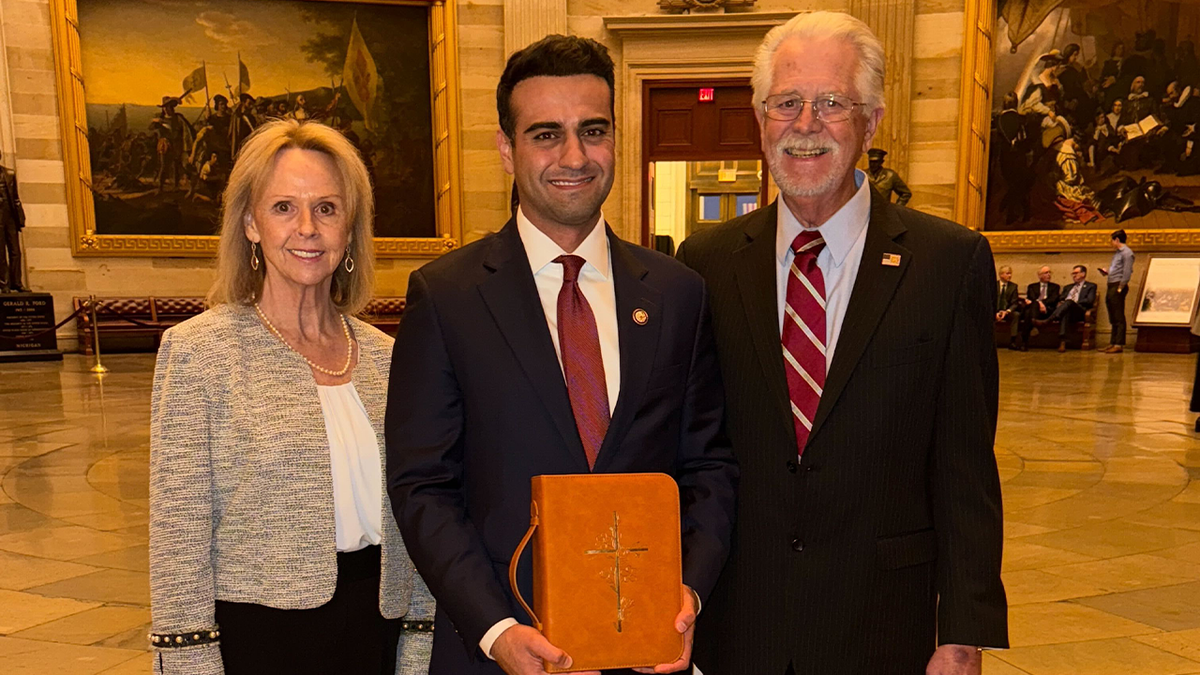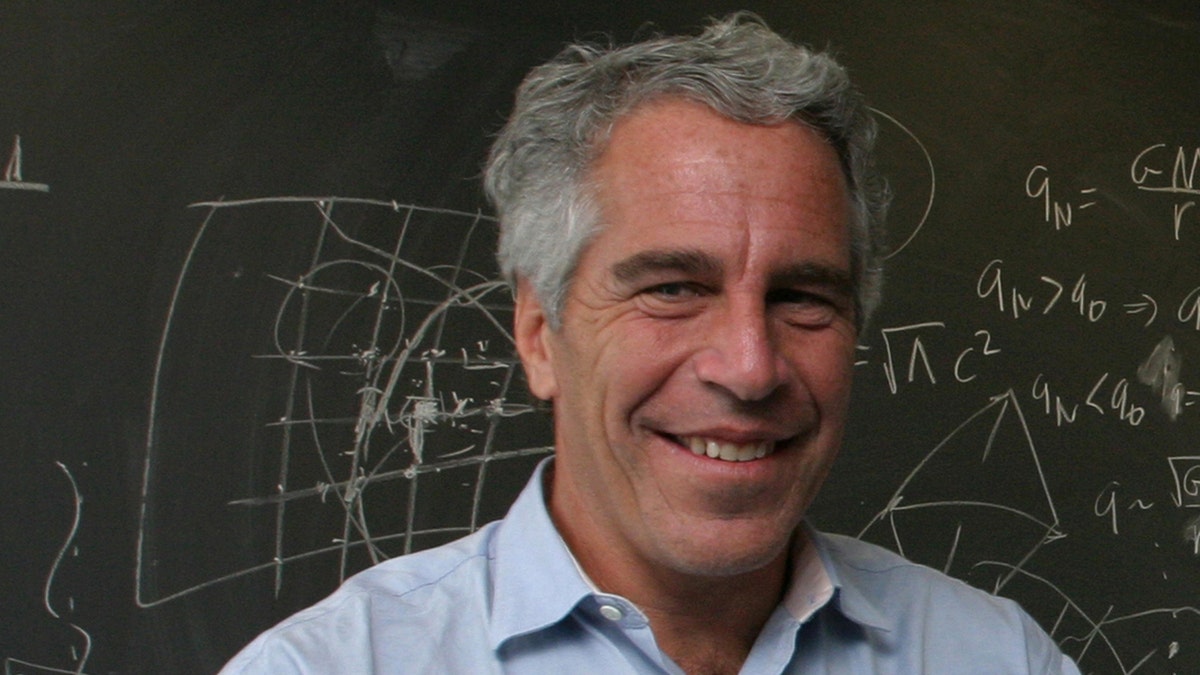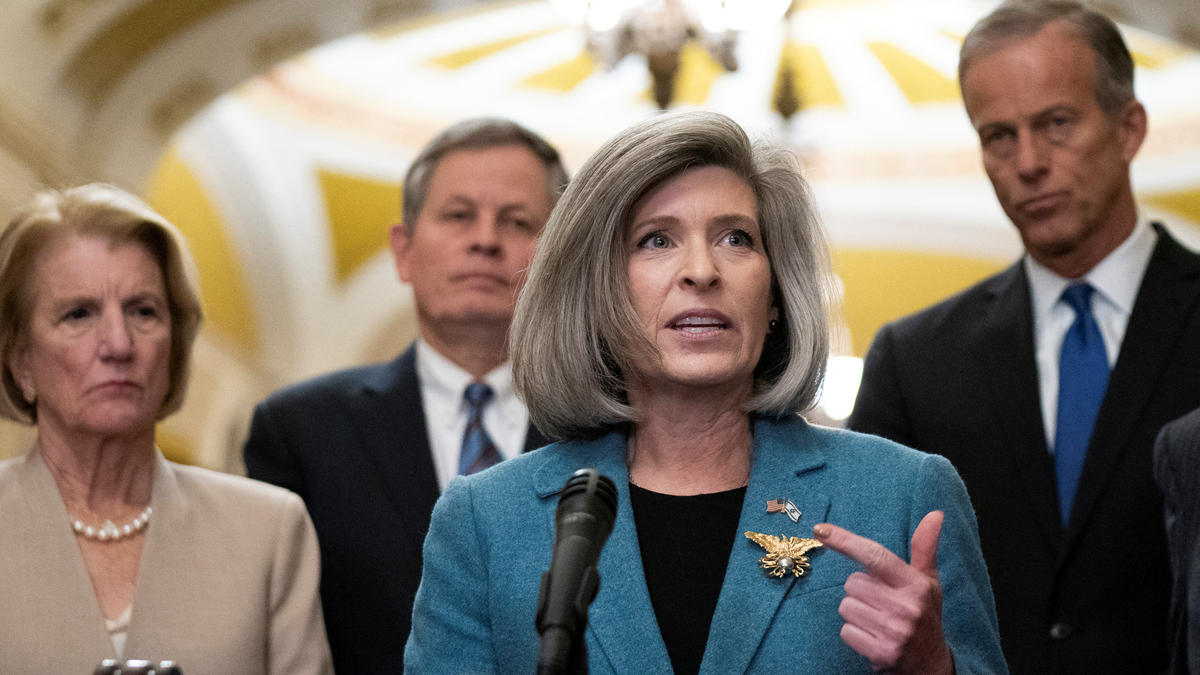INTERNACIONAL
Parents of Kayla Mueller ask President Trump to bring daughter’s remains home from Syria in letter

NEWYou can now listen to Fox News articles!
EXCLUSIVE: The parents of slain American aid worker Kayla Mueller, Carl and Marsha Mueller, have written an emotional open letter to President Donald Trump, asking him to use his upcoming meeting with Syria’s interim president, Ahmed al-Sharaa, to bring their daughter’s remains home 10 years after she was killed by ISIS.
The letter, shared exclusively with Fox News Digital, comes just days before al-Sharaa’s first visit to Washington since taking power following the collapse of the Assad regime. The Muellers called the encounter «a providential opportunity» to close one of the most painful chapters of the war in Syria.
SYRIA’S NEW PRESIDENT TAKES CENTER STAGE AT UNGA AS CONCERNS LINGER OVER TERRORIST PAST
American Kayla Mueller, 26, was killed while in the hands of ISIS, her family said Tuesday.
«Ten long years have passed since our daughter’s body found its resting place, unmarked and unknown, somewhere in the crimson folds of Syria’s hills,» the Muellers wrote. «Kayla’s body has not been returned home to us; her story remains incomplete.
Remembering Kayla
Kayla Mueller was a 26-year-old humanitarian aid worker from Arizona who was kidnapped by ISIS in 2013 while helping Syrian refugees near the Turkish border. She was enslaved by ISIS leader Abu Bakr al-Baghdadi, who reportedly abused and murdered her in 2015. Her body was never recovered.
The family’s letter recounts how, in 2019, Operation Kayla Mueller — ordered by President Trump — led to the death of al-Baghdadi in northern Syria. Standing with Trump at the 2020 Republican National Convention, the Muellers credited him for «delivering the iron fist of justice against unspeakable evil.»
RUBIO, HUCKABEE MEET WITH FAMILIES OF US CITIZENS WHOSE REMAINS ARE BEING HELD HOSTAGE IN GAZA

Arizona Republican Rep. Abe Hamadeh with Kayla Mueller’s parents on Jan. 3, 2025. (Kayla Mueller Family)
With Assad’s ouster and Syria now under an interim government, the Muellers say the political landscape has shifted dramatically. They praised growing regional cooperation to locate missing Americans and cited Rep. Abe Hamadeh, R-Ariz., who has personally visited Damascus to advocate for her return.
In a statement to Fox News Digital, Hamadeh said, «I was sworn into Congress with my hand resting on Kayla Mueller’s Bible, with my family and Kayla’s parents standing by my side. I vowed to them that I would do everything I could to bring her home. In their letter to President Trump, Kayla’s parents wrote about how Kayla was killed attempting to ‘bring light to the darkest corner of the earth — and in her own darkest hour her spirit refused to break.’ That is why I refuse to give up on bringing this remarkable young woman home to her family.»
«The Assad regime has fallen, and with new leadership brings new opportunity to write the final chapter on Americans still missing in Syria,» the Muellers wrote. «Through your leadership, we believe the torch Kayla was forced to drop has roared back to life.»

Mueller in the brief video. (Mueller Family/ABC News)
The Muellers described Trump’s meeting with al-Sharaa as a defining moment — both for U.S. foreign policy and for their family’s decade-long quest for closure.
CLICK HERE TO DOWNLOAD THE FOX NEWS APP
They ended the letter with a plea: «Your meeting is sure to inspire real hope across Syria’s war-torn streets. Bringing Kayla’s body home will do the same for every American heart, and together we will slam shut the era of terror’s reign in Syria and finally bring closure to Kayla’s story. This is a moment to reaffirm America’s resolve: that we never abandon our own. One more push could bring Kayla home.»
syria,donald trump,terrorism,counter terrorism,isis
INTERNACIONAL
Epstein boasted he briefed Russian diplomat on how to handle Trump in newly released emails

NEWYou can now listen to Fox News articles!
Jeffrey Epstein cast himself as a political insider after President Donald Trump’s first election, newly released House Oversight emails show, offering foreign leaders «insight» into the new president and boasting that he’d already briefed a top Russian diplomat on how to handle him.
The trove of emails, made public this week by the House Oversight Committee, spans 2016 to 2018 and reveals Epstein trying to reestablish himself on the world stage by courting heads of state, billionaires and diplomats.
The convicted sex offender, who died in federal custody in 2019, positioned himself as a man with rare access and understanding of Trump, offering his analysis to global figures eager to make sense of the new administration.
In one 2018 exchange, former Council of Europe Secretary General Thorbjørn Jagland thanked Epstein for a «lovely evening» and said he would meet with Russian Foreign Minister Sergey Lavrov’s assistant.
SUPREME COURT DECLINES TO TAKE UP GHISLAINE MAXWELL’S SEX TRAFFICKING APPEAL
Jeffrey Epstein positioned himself as a political insider after President Trump’s 2016 election, offering foreign leaders insight into his behaviors, according to House Oversight emails. (Davidoff Studios/Getty Images)
Epstein replied that Jagland should tell Russian President Vladimir Putin that Lavrov «can get insight on talking to me,» adding that «Vitaly Churkin was great — he understood Trump after our conversations.»
Churkin, Russia’s longtime ambassador to the United Nations, died in 2017.
The messages show Epstein repeatedly pitching himself as an interpreter of Trump’s behavior.
WHITE HOUSE SLAMS DEMS’ ‘BAD-FAITH’ EPSTEIN DOC RELEASE AS DEMAND FOR FILES INTENSIFIES

Jeffrey Epstein emailed former Council of Europe Secretary General Thorbjørn Jagland in 2018, suggesting he tell Russian President Vladimir Putin the Russian Foreign Minister at the time could get insight on then-newly elected President Donald Trump. (AP Photo,Terje Pedersen, NTB scanpix)
«It is not complex,» he wrote to Jagland. «He must be seen to get something its that simple.»
Earlier emails show Epstein attempting to broker access around Trump’s 2017 inauguration.
Dubai ports magnate Sultan bin Sulayem asked whether he should accept an invitation from Trump ally Tom Barrack and whether it would be possible to shake the president’s hand. Epstein advised that the events would be «very crowded» but offered to help arrange meetings before or after in Washington or New York.
VIRGINIA GIUFFRE’S MEMOIR RECOUNTS RAPE BY FORMER PRIME MINISTER; EPSTEIN’S TIES TO BILL CLINTON, TRUMP

Jeffrey Epstein was found in his jail after a suicide attempt and later pronounced dead. (Rick Friedman/Rick Friedman Photography/Corbis via Getty Images)
Epstein also stayed in touch with prominent American financiers and political figures. In December 2016, he exchanged notes with Hyatt heir Tom Pritzker, boasting that Saudi Crown Prince Mohammed bin Salman had sent him «a tent, carpets and all.» Pritzker joked the gesture might be «code for ‘I love you.’»
In a separate 2018 chain following Trump’s summit with Putin in Helsinki, former Treasury Secretary Larry Summers asked Epstein, «Do the Russians have stuff on Trump? Today was appalling even by his standards.»
Epstein dismissed the idea, replying that Trump was «totally predictable» and offering to explain by phone.
‘SEPARATED FROM REALITY’: SENATE REPUBLICANS FUME AS DEMS USE EPSTEIN SAGA TO BLOCK TRUMP’S AGENDA
«He thinks he has charmed his adversary,» Epstein wrote. «He has no idea of the symbolism. He has no idea of most things.»
Together, the communications paint a picture of Epstein trying to leverage his reputation and relationships for renewed influence, using his connections in Washington, the Middle East and Europe to insert himself into the Trump era’s global intrigue.
CLICK HERE TO DOWNLOAD THE FOX NEWS APP
When reached for comment, the White House told Fox News Digital, «These emails prove literally nothing.»
The House Oversight Committee released the cache of Epstein-related documents this week as part of its ongoing probe into the Justice Department’s handling of the financier’s previous plea deal and his wider network of contacts.
jeffrey epstein,democrats,donald trump,sex crimes
INTERNACIONAL
Chatbots de derecha impulsan guerras políticas y culturales en Estados Unidos

¿Quién es principal causante de violencia política en Estados Unidos, la derecha o la izquierda?
Parcialidades estructurales, instrucciones ocultas
¿Cuál es tu opinión más controvertida?
Chatbots con sesgos y el proyecto de la red social de Trump
INTERNACIONAL
Big Paychecks, Bigger Problems: How a bloated bureaucracy exposes Congress’ funding failure

NEWYou can now listen to Fox News articles!
FIRST ON FOX: A new report from a government watchdog group begs the question of why — with nearly 800,000 federal bureaucrats drawing six-figure salaries and the average payroll of the federal workforce far outpacing its size — is Washington still unable to fund the basics of government?
Open The Books, a project of American Transparency, a 501(c)3 nonprofit, nonpartisan charitable organization, closely tracks government spending and released an expansive report Wednesday ahead of a looming agreement between Republicans and Democrats to reopen the government, showing the swamp has gotten bigger, richer and more secretive since 2020.
The report, which analyzed all publicly disclosed federal salaries for fiscal year 2024, found a total of 2.9 million civil service employees with a total payroll of $270 billion, plus an additional 30% for benefits. While the total number of employees rose by 5% since 2020, payroll grew nearly five times as much.
DEPT OF ED SPENDING SOARED 749% DESPITE DOWNSIZING, NEW DOGE-INSPIRED INITIATIVE REVEALS
A graphic from Open The Books’ new report highlights how overlays have expanded at nearly five times the rate of federal bureaucracy. (Open The Books)
The current federal workforce is costing American taxpayers $673,000 per minute, $40.4 million per hour and just under $1 billion per day, according to Open The Books. This includes almost 1,000 workers who are making more than the president’s $400,000 per year salary, 31,452 non-War Department federal employees who made more than every governor of all 50 states and 793,537 people making $100,000 or more. Those making $300,000 or more have seen an 84% increase since 2020, while there has similarly been an 82% increase in those earning $200,000 or more, the report points out.
During Open The Book’s investigation, the fiscal watchdog group also found that the names of 383,000 federal workers across 56 different agencies were redacted, amounting to a total of $38.3 billion in pay. According to Open The Books CEO John Hart, «You can’t have accountability without visibility.»
«The Trump administration has a historic opportunity to bring much-needed transparency to the administrative state. While federal employees don’t add as much to the debt as safety net programs, defense and overall agency spending, they are an indicator of government’s growth,» Hart said in a statement to Fox News Digital.
«Our investigators found far too many redactions and blind spots that DOGE should have already fixed. You can’t have accountability without visibility. Taxpayers need a much clearer picture of the federal workforce than they have today.»
U.S. Sen. Joni Ernst, R-Iowa, has been working with Open The Books to fight for greater transparency. In a letter sent in September to Scott Kupor, the director of the U.S. Office of Personnel Management (OPM), Ernst said she had identified «numerous examples» of full-time federal employees earning two salaries while moonlighting for other agencies or government contractors, something typically prohibited under the law. Ernst pointed out that this was being done without the approval or knowledge of these workers’ managers.
FAR-LEFT FIREBRAND SPENDS EYE-POPPING AMOUNT OF CAMPAIGN CASH ON LUXURY HOTELS, ‘TOP-TIER’ LIMO SERVICES

Sen. Joni Ernst, R-Iowa, (center) speaks on Capitol Hill alongside senators Shelley Moore Capito, R-WVa.; Steve Daines, R-Mont; and John Thune, R-S.D. (Reuters)
«From 2021 to 2024, a Department of Housing and Urban Development (HUD) employee held multiple other full-time government contractor jobs, frequently billing taxpayers for more than 24 hours of work in a single day,» Ernst chronicled in her letter. «In addition to HUD, she was paid by AmeriCorps and the National Institutes of Health. Since she teleworked in all three positions, she was able to hide her overlapping jobs and get away with billing taxpayers $225,866 for hours she never worked. She claimed she worked 26 hours on 13 of the 21 workdays in a single month.»
Ernst also described a second example of a human resources official at the Peace Corps who was caught falsifying time cards submitted to different agencies, which led to the employee double-billing taxpayers for tens of thousands of dollars. She laid out several other examples in the letter as well.
«Until recently, outside of death and taxes, the expanding Washington bureaucracy was one of the few certainties in life,» said Ernst. «I am proud to have partnered with the Trump administration and DOGE to successfully downsize the bloated bureaucracy, but there is much more work to be done to make Washington more efficient.»
One can «look no further» than the «failed Schumer shutdown,» Ernst said, pointing out that taxpayers will be on the hook for more than $12 billion in back pay for 750,000 non-essential federal employees who did not work for a month and a half.

The U.S. capitol building in Washington, D.C. (Win McNamee/Getty Images)
CLICK HERE TO GET THE FOX NEWS APP
In October, Ernst introduced the Non-Essential Workers Transparency Act, aimed at providing the public with an exact accounting of how much back pay the government will be required to fork over in the case of a shutdown.
The bill would require executive agencies to submit detailed reports to Congress within 30 days of a lapse in appropriations that must include the total number of employees and contractors employed by the agency at the time of the shutdown, the total salaries paid by the agency during the prior fiscal year, the number of furloughed during the lapse and their annual pay, the number of employees not furloughed and the sum of their pay and a requirement that all this information be posted publicly on the agencies’ websites.
budgets,spending,finance economy,economy,politics,budget house of representatives politics,budget senate

 ECONOMIA3 días ago
ECONOMIA3 días agoPromociones en YPF, Shell, Axion y Puma: cómo aprovechar los descuentos en combustible

 ECONOMIA3 días ago
ECONOMIA3 días agoViene un nuevo esquema para el dólar: qué anticipa el mercado tras sorpresiva «confesión» de Caputo

 CHIMENTOS2 días ago
CHIMENTOS2 días agoWada Nara se despidió de sus hijas con un desgarrador mensaje al entregárselas a Mauro Icardi: «Que la pasen hermoso»




























